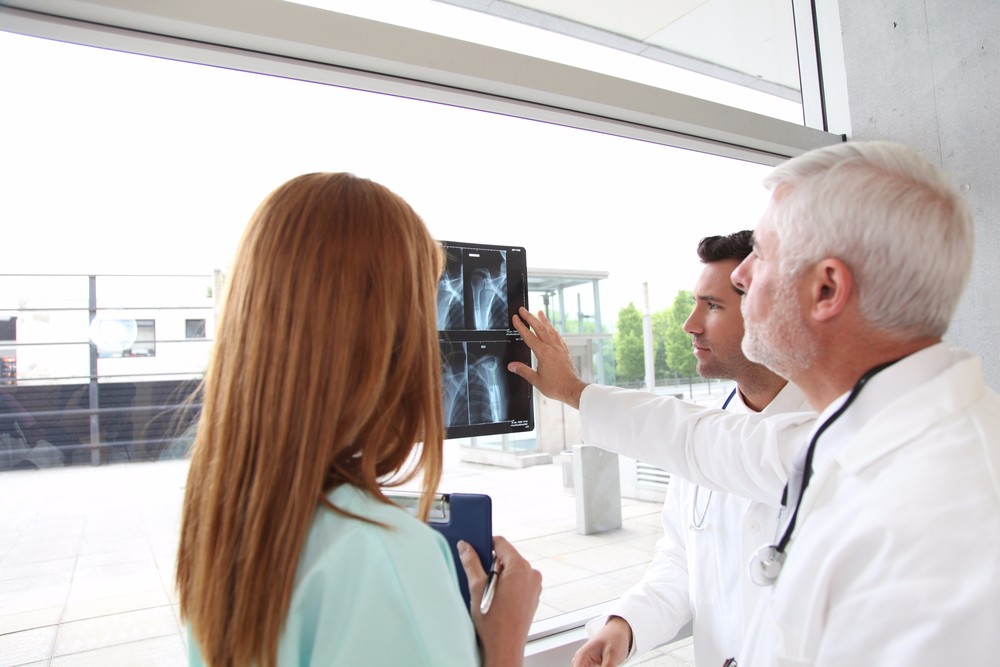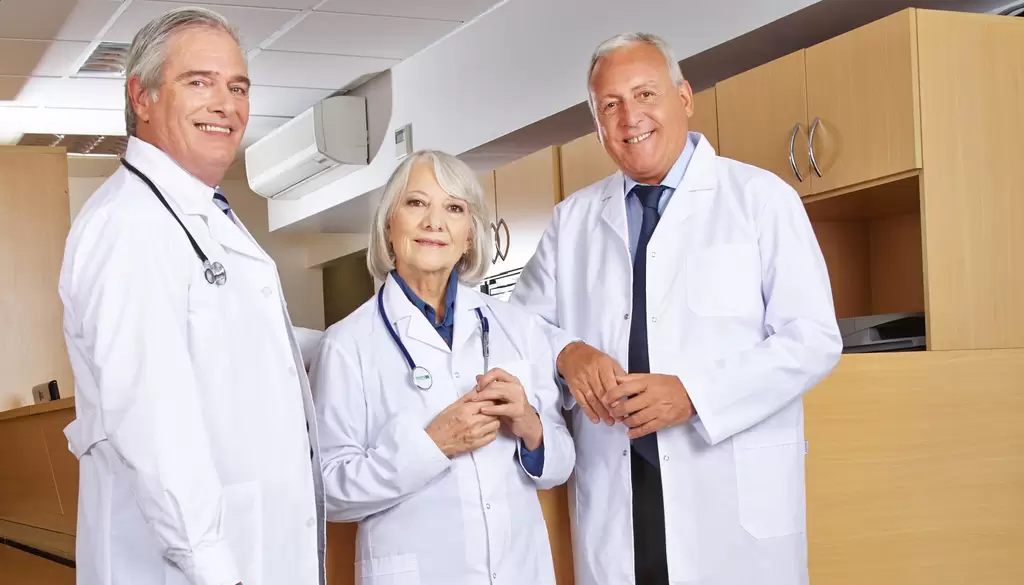Healthcare with Confidence
Sarcoma is a group of various types of cancer that can appear at any age, anywhere in the body and develop from different types of healthy tissue (soft tissue and skeleton or bone tissue).
In Israel, our doctors specialize in the treatment of soft tissue and bone sarcoma.
Prof. Ofer Merimsky – is a leading Israeli specialist in the treatment of skeletal and soft tissue sarcomas. Head of the Oncology Department Sourasky Clinic (Ichilov).
Dr. Dror Levin – Head of the Department of Pediatric Hemato-Oncology of the Tel Aviv Medical Center “Sourasky” (Ichilov). Leading expert of Israel in the field of treatment of all kinds of sarcomas and other malignant diseases in children. Dr. Levin applies methods of bio- and immunotherapy of sarcoma in Israel.
Prof. Ihuda Kolander – Head of the Orthopedic Oncology Department the Tel Aviv Medical Center “Sourasky” (Ichilov), is a leading Israeli specialist in the field of bone cancer treatment. Surgeon.
Prof. Chaim Gutman – Head of the Department of Soft Tissues Surgical Oncology, Rabin Medical Center, Beilinson Hospital. Surgeon.
What is soft tissue sarcoma?
Soft tissue sarcoma is a rare cancer that can develop anywhere in the body and at any age. The source of the cells is not always clear, but many types of soft tissue sarcoma develop from normal connective tissue cells, such as muscle cells, fat cells, vascular cells, tendon sheaths, peripheral capsules, and peripheral nerve sheath.
Some types of sarcoma occur in children, adolescents and young people, while others are more typical of adults. About half of all soft tissue sarcomas develop in the lower extremities, especially in the hip joint region. Less often, sarcoma occurs in the central part – stomach and pelvis.
What is bone tissue sarcoma (osteosarcoma)?
Some types of sarcoma develop into bones and cartilage. They grow, develop and are treated differently than soft tissue sarcomas. In some cases, it is difficult to say exactly where the sarcoma began to develop – in soft tissues or bones.
There are also types of sarcomas, for example Ewing’s sarcoma, which may begin to grow in both bone and soft tissues.
All types of sarcoma:
Askin’s tumor (sarcoma), Botryoid sarcoma, Chondrosarcoma, Ewing’s sarcoma, Malignant hemangiendothelioma, Malignant schwannoma, Osteosarcoma.
Soft tissue sarcomas: Alveolar sarcoma of the soft part, Angiosarcoma, Hemangiosarcoma, Cystosarcoma of the Phyllodus, Dermatofibrosarcoma, Desmoid tumor, Desmoplastic small round cell tumor, Epithelioid sarcoma, Extracellular chondrosarcoma, Extracellet osteosarcoma, Fibrosarcoma, Gastrointestinal stromal tumor (GIST), Hemangiopericytoma (known as a “single fibrous tumor.” Kaposi’s Sarcoma, Leiomyosarcoma, Liposarcoma, Limpangiosarkoma, lymphosarcoma (not considered sarcoma), malignant fibrous histiocytoma (pleomorphic undifferentiated sarcoma), malignant tumors of peripheral nerve membranes (Neurofibrosarcoma), Plexiform fibrohistiocytic sarcoma, Rhabdomyosarcoma, Synovial sarcoma.
Soft tissue sarcomas are divided into different subtypes. To date, about 50 types of sarcoma are known, but the vast majority have similar biological behaviors, so the therapeutic approach is generally similar, except for a special type.
The most common types of sarcoma.
Liposarcoma. These sarcomas are similar in appearance to the fat cells in the body. They can grow anywhere in the body and usually develop in adults aged 50-65 years. Some of them grow at a very slow rate (so they take many years to develop), while others grow faster. Growth rates are usually associated with malignant tumors.
Leiomyosarcoma. Similar in appearance to smooth muscle cells. Smooth muscles are also called involuntary muscles, and they form the shell of the uterus, stomach, intestine and virtually every blood vessel in the body. Leiomyosarcoma is one of the most common types of sarcoma that can occur anywhere in the body.
Rhabdomyosarcoma. Rhabdomyosarcoma are similar in appearance to involuntary muscle cells in the body. These muscles are known as skeletal muscles. Rhabdomyosarcomas usually occur in the region of the head, neck, pelvis, but can also appear on the hands or hips. Rhabdomyosarcomas are more common in children.
Malignant tumor of peripheral nerve membranes. These sarcomas are similar in appearance to the cells surrounding the nerve cells, and can appear anywhere in the body. Cells around nerve cells are called Schwann cells, so these tumors are also called malignant schwannomas or neurofibrosarcoma. They often appear in people with a rare genetic disease called NF1 (Von Recklinghausen – “Elephant Man”).
Myxofibrosarcoma. The subtype of sarcoma is most common among adults. Myxofibrosarcoma can occur in any part of the body, but usually develop in the hands or feet.
Synovial sarcomas. Synovial sarcomas usually develop around joints, such as the knee or elbow, but can occur anywhere in the body. They are more common among young people. This type of sarcoma is characterized in many cases by a very slow development, which sometimes takes years. A tumor begins with a tiny lesion that progresses slowly over the years, so it often takes a long time for the disease to be diagnosed.
Angiosarcoma. A multicellular tumor, which, as a rule, appears on the fourth decade of human age. Angiosarcoma appears sometimes in a part of the body that has been exposed to radiation many years ago.
Stromal tumor of the gastrointestinal tract. Stromal tumors of the stomach and intestines are sarcomas that develop from the gastrointestinal tract. These tumors behave differently than other types of sarcoma, so their treatment is different.
Ewing’s sarcoma. It usually develops in the bones and, as a rule, in children aged 8-12 years, but about 20% of tumors develop in soft tissues and they are known as Ewing tumors outside the skeleton. Ewing’s soft tissue sarcomas are treated in the same way as Ewing’s sarcomas that develop in the bones, and not like other sarcomas in soft tissues.
Sarcoma of soft tissues in children. Diseases that occur in children, adolescents and youth, and which account for two thirds of cases. Symptoms and treatment of children differ from those of adults.
The cause of soft tissue sarcoma is unknown, and research on this issue continues. Sarcomas, like other types of cancer, are not infectious diseases and are not transmitted from person to person.
Related Information
⇒ Sarcoma – prognosis and recovery
⇒ Immunotherapy of sarcoma in Israel
⇒ Precision cancer treatment in Israel







